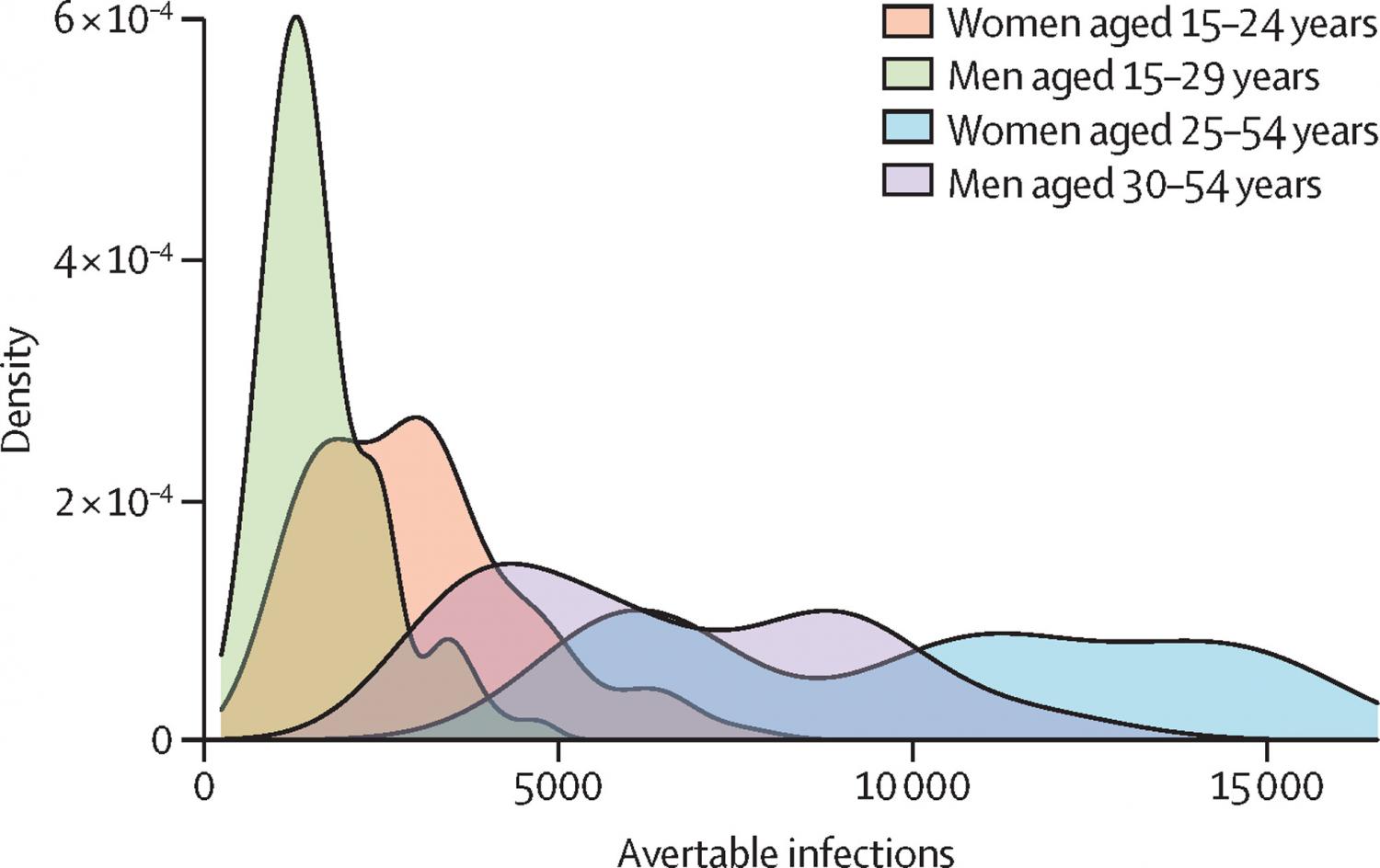
Background: HIV prevention cascades provide a systematic understanding of barriers to prevention. In this study we used mathematical modelling to understand the consequences of these barriers and how the cascade could be strengthened to maximise epidemiological impact, providing potentially important insights for programmes. Methods: We used an individual-based model of HIV transmission (PopART-IBM), calibrated to data from the Manicaland cohort from eastern Zimbabwe. HIV prevention cascade estimates from this cohort were used as probabilities for indicators in the model representing an individual's motivation, access, and capacity to effectively use pre-exposure prophylaxis, voluntary male medical circumcision, and condoms. We examined how current barriers affect the number and distribution of HIV infections compared with a no-barrier scenario. Using assumptions about how interventions could strengthen the HIV prevention cascade, we estimated the reduction in HIV infections over a 10-year period through addressing different elements of the cascade. Findings: 21 200 new potentially avertable HIV infections will occur over the next 10 years due to existing HIV prevention cascade barriers, 74·2% of the 28 500 new infections that would occur with existing barriers in a population of approximately 1·2 million adults. Removing these barriers would reduce HIV incidence below the benchmarks for epidemic elimination. Addressing all cascade steps in one priority population is substantially more effective than addressing one step across all populations. Interpretation: Interventions exist in eastern Zimbabwe to reduce HIV towards elimination, but barriers of motivation, access, and effective use prevent their full effect being realised. Interventions need to be multilayered and address all steps along the HIV prevention cascade. Models incorporating the HIV prevention cascade can help to identify the main barriers to greater effectiveness. Funding: National Institutes of Mental Health, Bill & Melinda Gates Foundation, and Medical Research Council Centre for Global Infectious Disease Analysis funding from the UK Medical Research Council and UK Foreign, Commonwealth & Development Office (FCDO).
